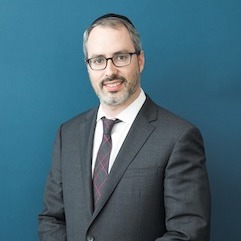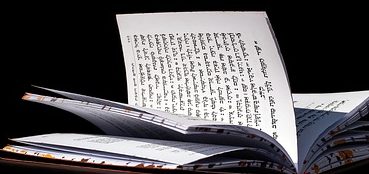All evil that happen s to the Jews is because of Tisha B’Av, and therefore we mourn on Tisha B’Av even if that’s not the day it actually happened – Brisker Rav. This is explicit in this kinah that writes “their murders were as tragic as the burning of the Bais Hamikdash, but we do not add an additional day of mourning”.
This Kinah discusses the destruction of Speyer, Mainz and Worms, which were from the larger cities that were destroyed at the very beginning of the Crusade. In addition there were numerous small towns and villages that were wiped out as well.
There are three distinct items that are lamented. The thousands of people killed, including great Torah scholars. Secondly, the destruction of Shuls and Torah centers, referred to as מעט מקדשי. And thirdly, we lament the burning of Sifrei Torah and volumes of the Talmud (see Kinah 41).
Let us look at some of the history, in order to better appreciate the magnitude of the loss.
A so called ‘crusader’ named Count Emicho was one of the early crusaders. Setting off in the early summer of 1096, an army of around 10,000 men, women and children proceeded through the Rhine valley, towards the Main River and then to the Danube.
Emperor Henry IV ordered the Jews to be protected when he learned of Emicho’s intent. After some Jews were killed at Metz in May, John, Bishop of Speyer gave shelter to the Jewish inhabitants. Still 10 men and one women who were found outside the fortress were slain by crusaders on May 3. Later on they came back and killed the rest of the community as well.
On May 18th, a Sunday, they reached Worms. They immediately went about spreading rumors that the Jews had killed a Christian child, and that they had poisoned the towns wells. The local population joined in and every Jew that they captured was killed. The Bishop of Worms attempted to shelter Jews, but 8 days later the crusaders broke in to his episcopal palace and killed the Jews inside. This was on Sunday May 25th, Rosh Chodesh Sivan, and the mekonen writes בקריאת הלל לשוררה – while they were saying Hallel they were killed. At least 800 (and some versions say 1100) Jews were massacred in Worms when they refused Christian baptism.
The Seder Hadoros quotes the Sm”a who explains, in a lesson to us all, why Worms suffered more than other communities throughout history. He writes that the community of Worms was established by exiles of the first Bais Hamikdash. When the Jews returned to Jerusalem after 70 years, the Jews of Worms did not return. A message was sent to them by the leaders in Jerusalem, inviting them to come join. Their response was tragic – ‘you stay where you are in your big Jerusalem, and we will stay where we are in our little Jerusalem’. The lack of recognition by the Jew that he is in Galus is ultimately the most dangerous attitude he can have.
News of Emicho’s crusade spread quickly, and he was prevented from entering Mainz on May 25 by Bishop Ruthard, who had been paid 400 pieces of silver to protect the Jews. Emicho also took an offering of gold raised by the Jews of Mainz in hope to gain his favor and their safety. Bishop Ruthard tried to protect the Jews by hiding them in his lightly fortified palace. Nevertheless Emicho did not prevent his followers from entering the city on May 27 and a massacre followed, with the help of the locals. Eventually the Bishop himself fled and left the Jews to their fate.
There is an account written by a Shlomo Bar Shimshon who describes how the Jews of Mainz and their Rov, Rav Kloynomus ben Meshulam, killed themselves to avoid forced baptism. He describes men killing their families and then themselves, and women killing their own children to avoid the evil hands of the Crusaders.
He describes a woman, Rachel and in graphic details how she killed her four children with her own hands so that they would not be cruelly killed or converted by the crusaders. When they found her crying over the four bodies of her children they immediately struck her and killed her, and her husband, seeing all this, fell on the sword as well. This is but one of the many incidents that happened.
All this happened on Shavous – as the Mekonen writes ביום נתינתה כמו כן אז חזרה. On the day of the giving of the Torah it was ‘returned ‘ to Hashem, in the form of the death of great Torah Scholars and the burning of the Seforim and Sifrei Torah.
In all over 1000 Jews were killed in Mainz, and over 5000 during the First Crusade. This was the first organized mass roundup and murder of Jews in history.
And we are left with desolation and destruction. In the words of the mekonen – אי תורה ותלמוד והלומדה Rav Soloveitchik explains that we mourn not only the loss of the Scholar, but also the loss of the lomda – the common Jew who was attached to Torah, and would spend time every day studying Torah.
He compares it to Jews who returned after the war to their hometowns, which had been bustling centers of Torah activity prewar, and they were desolate and abandoned. They couldn’t get a minyan together; there were no Sifrei Torah and seforim. The feeling one has is a cry of desperation – ‘where is everybody?’


Very moving. Thank you for the article.
Curious about “the community of Worms was established by exiles of the first Bais Hamikdash”. I’ve read elsewhere that the kehilla dates back around 1,000 years. Is there any evidence to support the Bais Hamikdash assertion? Thanks